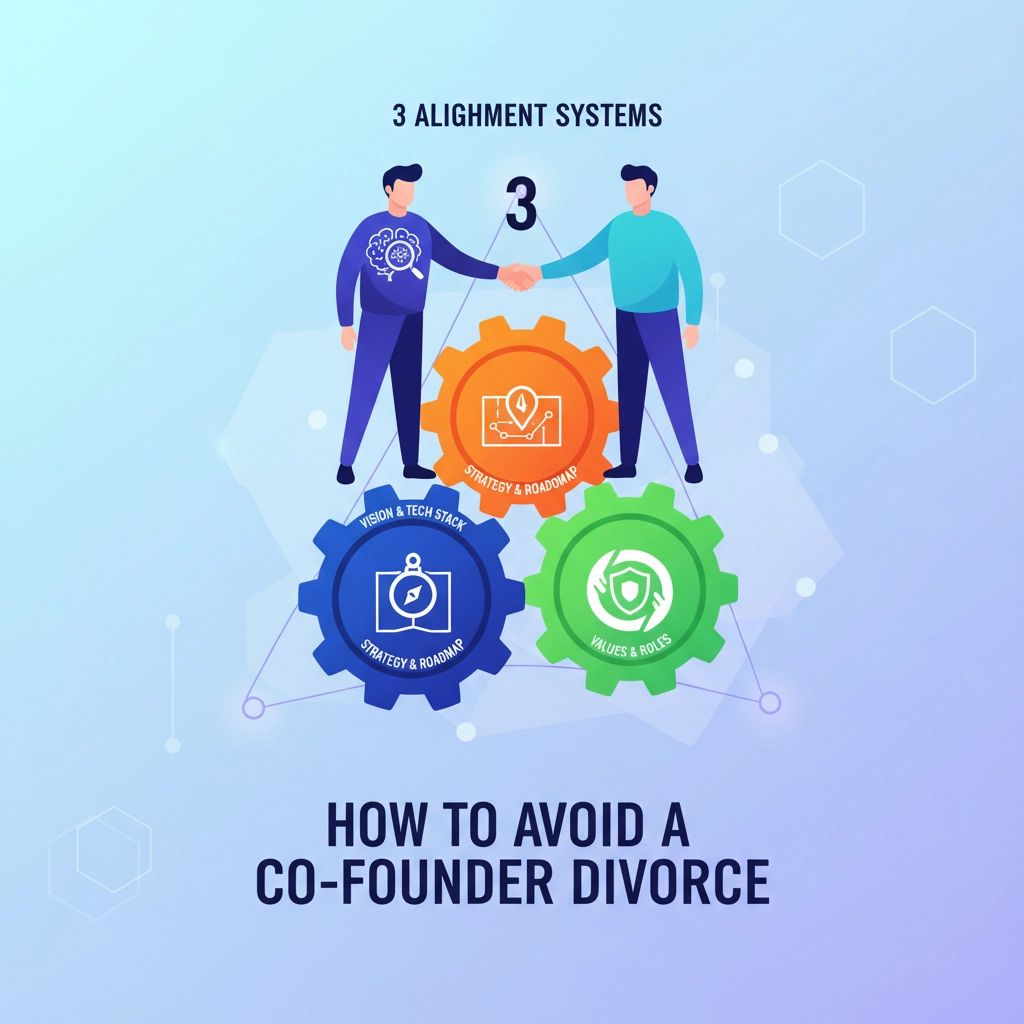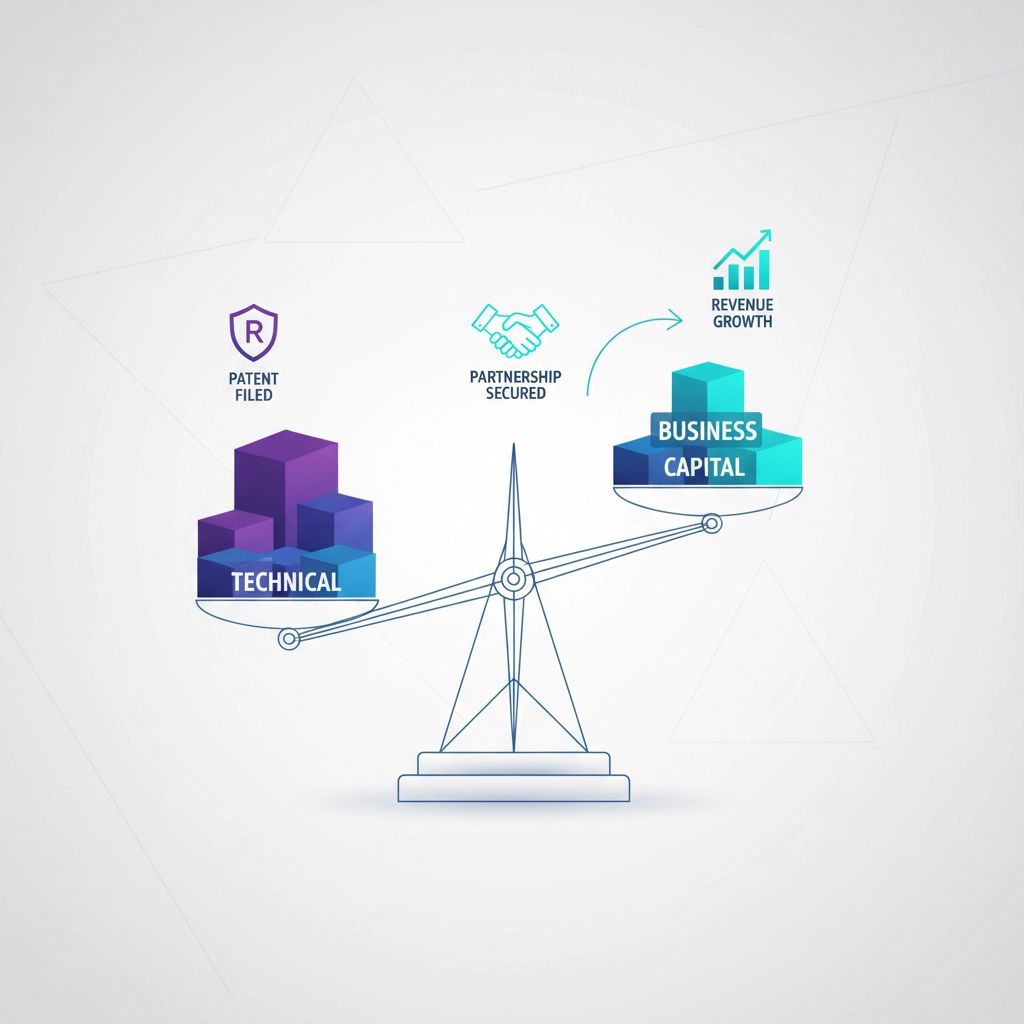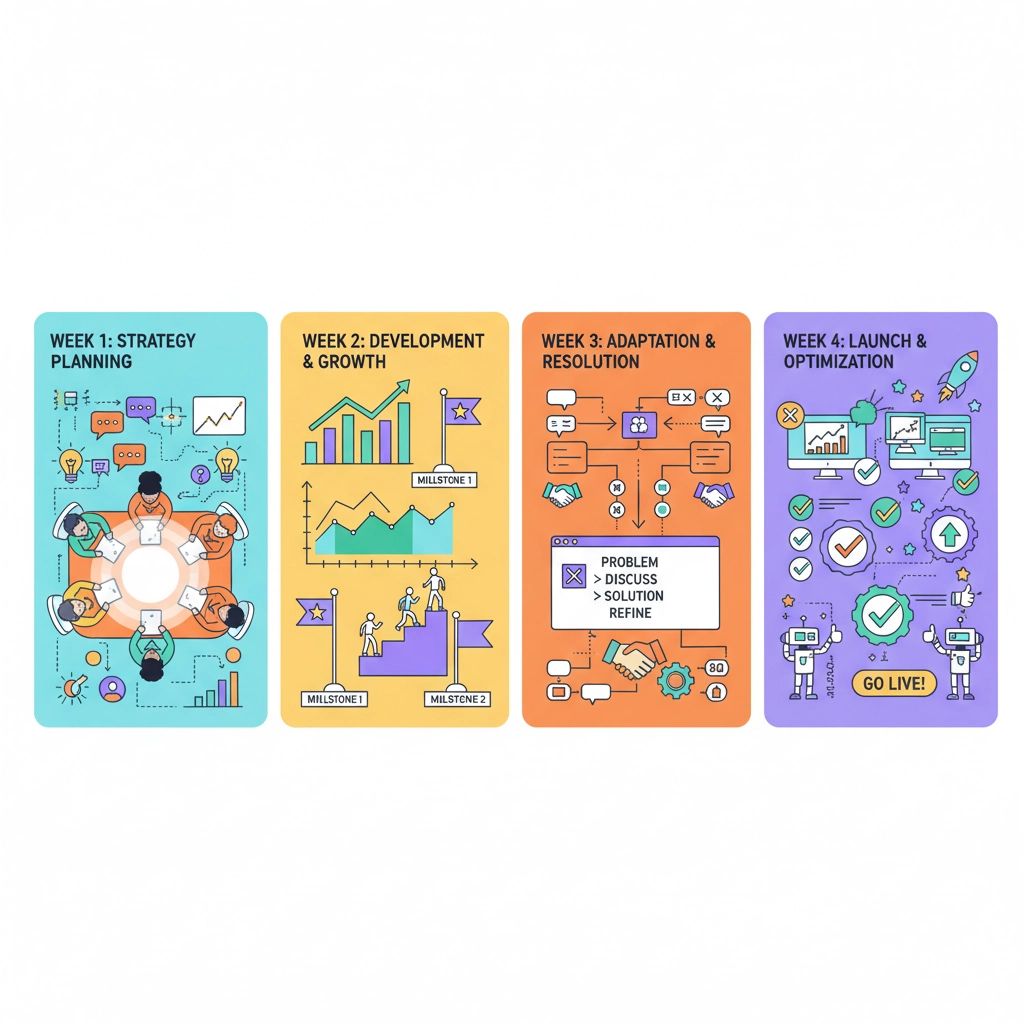How to Avoid a Co-Founder Divorce: 3 Alignment Systems Every Deeptech/Healthtech Startup Needs
Oct 07, 2025 
92% of co-founder breakups happen in the first 5 years. And in deeptech/healthtech? The stakes are even higher: your IP, years of R&D, and that breakthrough technology you've been perfecting could all disappear in a messy founder split.
You've probably seen it happen. Brilliant technical teams implode over equity disputes, strategic disagreements, or simple miscommunication. One day they're changing the world together, the next they're fighting over who owns what in a lawyer's office.
Here's the truth: Co-founder divorce isn't about personality clashes: it's about missing systems.
If you're post-seed or approaching Series A with a deeptech or healthtech startup, you need bulletproof alignment systems now. Not when problems surface. Not when investors start asking uncomfortable questions about your founding team stability.
Right now.
💥 System #1: The Strategic Alignment Engine
This is your foundation. Without unified vision and strategy, every decision becomes a potential conflict point. And in deeptech/healthtech, where technical complexity meets long development cycles, misaligned co-founders can derail years of progress overnight.
The Weekly Strategy Sync (Non-Negotiable)
Set up a weekly 90-minute strategy session with your co-founding team. Not a status update meeting. Not a project review. A deep strategic alignment session.
Here's your agenda:
- Vision check: Are we still solving the same problem the same way?
- Priority alignment: What are our top 3 focus areas this quarter?
- Decision framework: How do we handle disagreements when they arise?
- Market reality check: What's changing in our competitive landscape?

Pro tip: Record these sessions. When disagreements happen later (and they will), you can reference exactly what everyone agreed to.
The Mission Litmus Test
Every major decision gets filtered through this simple question: "Does this move us closer to our agreed-upon exit vision?"
If you don't have an agreed-upon exit vision, stop reading and create one now. Seriously. Your startup needs a clear destination, or you'll spend years building something nobody wants to buy.
Action item: Schedule your first Strategic Alignment Engine session this week. Put it in everyone's calendar as a recurring meeting. Non-negotiable.
⚡ System #2: Dynamic Equity & Performance Framework
Static equity splits kill partnerships. You know what I'm talking about: the classic 50/50 split that seemed fair at the beginning but feels completely wrong 18 months later when one founder is working 80-hour weeks while the other treats it like a side project.
Milestone-Based Vesting (The Smart Way)
Forget time-based vesting. In deeptech/healthtech, milestones matter more than months served.
Set up equity that vests based on:
- Technical milestones hit
- IP developed and filed
- Key partnerships secured
- Revenue targets achieved
- Fundraising goals met
Example framework:
- 25% vests at product prototype completion
- 25% vests at first commercial partnership
- 25% vests at Series A close
- 25% vests at revenue milestone ($1M ARR)

The Contribution Tracking System
This changes everything. Track contributions in real-time using a simple system:
Technical Contributions: IP developed, patents filed, technical breakthroughs
Business Contributions: Partnerships secured, revenue generated, team hired
Capital Contributions: Funds invested, grants secured, investor relationships built
Monthly review: Each co-founder logs their contributions. Transparent. Measurable. No room for "I did more work" arguments later.
Investor-Ready Accountability
Investors hate founder drama. They want to see that your partnership is bulletproof before they write checks.
Your equity framework should answer:
- What happens if someone wants out?
- How do you handle underperformance?
- What are the triggers for equity adjustment?
- How do you protect IP in case of disputes?
Get this documented by a lawyer now. Not later. Now.
🎯 System #3: Conflict Resolution & Governance Protocol
Conflicts will happen. The question isn't if, but how you'll handle them when they do.
Most technical founding teams skip this until it's too late. Don't be most teams.
The 48-Hour Rule
When disagreements arise, you have 48 hours to resolve them using this protocol:
Hour 0-24: Direct discussion between disagreeing parties
Hour 24-36: Bring in neutral third co-founder (if applicable) or trusted advisor
Hour 36-48: Use predetermined decision-making framework
No exceptions. Issues that fester become relationship-ending conflicts.

Decision Rights Matrix
Crystal clear decision authority prevents most conflicts before they start.
CEO decisions: Strategy, hiring C-level, major partnerships, fundraising
CTO decisions: Technical architecture, R&D priorities, IP strategy
Shared decisions: Equity changes, major pivots, exit planning, board composition
Write this down. Sign it. Reference it when decisions need to be made.
The Circuit Breaker Clause
Your safety net. When co-founders reach an impasse on critical decisions, activate the circuit breaker:
- Step 1: 72-hour cooling off period
- Step 2: Bring in predetermined external advisor or board member
- Step 3: If still deadlocked, predetermined decision-maker makes the call
- Step 4: All parties commit to supporting the decision for 90 days
This prevents your startup from grinding to a halt during founder disputes.
🚀 Your Implementation Checklist
Week 1: Set Up Strategic Alignment Engine
- Schedule weekly strategy sync meetings
- Define your exit vision together
- Create decision-making framework
Week 2: Design Dynamic Equity Framework
- Map out milestone-based vesting
- Set up contribution tracking system
- Get legal documentation started
Week 3: Build Conflict Resolution Protocol
- Implement 48-hour rule
- Create decision rights matrix
- Establish circuit breaker process
Week 4: Stress Test Everything
- Run through potential conflict scenarios
- Practice using your new systems
- Make adjustments based on what you learn

The Bottom Line: Systems Win
Co-founder divorce isn't inevitable: it's preventable. But only if you build the right systems before you need them.
These three alignment systems have helped hundreds of technical startups navigate the messy middle between seed and Series A without losing their founding teams. They work because they're proactive, not reactive.
Your deeptech/healthtech startup is too important to fail because of founder drama. You've got breakthrough technology to build, problems to solve, and an exit to plan.
Don't let co-founder conflicts derail everything you've worked for.
The time to build these systems is now. While relationships are strong. While everyone's motivated. While you can still think clearly about what's best for the business.
Your future investors will thank you. More importantly, your co-founders will too.
Ready to bulletproof your founding team? These systems are just the beginning. The real magic happens when you combine founder alignment with a clear exit strategy that makes investors fight to get into your rounds.
Want to see how the most successful technical founders turn team alignment into funding magnets? Join our waitlist for the Capital Catalyst where we break down the exact frameworks that 10x your fundraising speed.
Let's go! 💥
